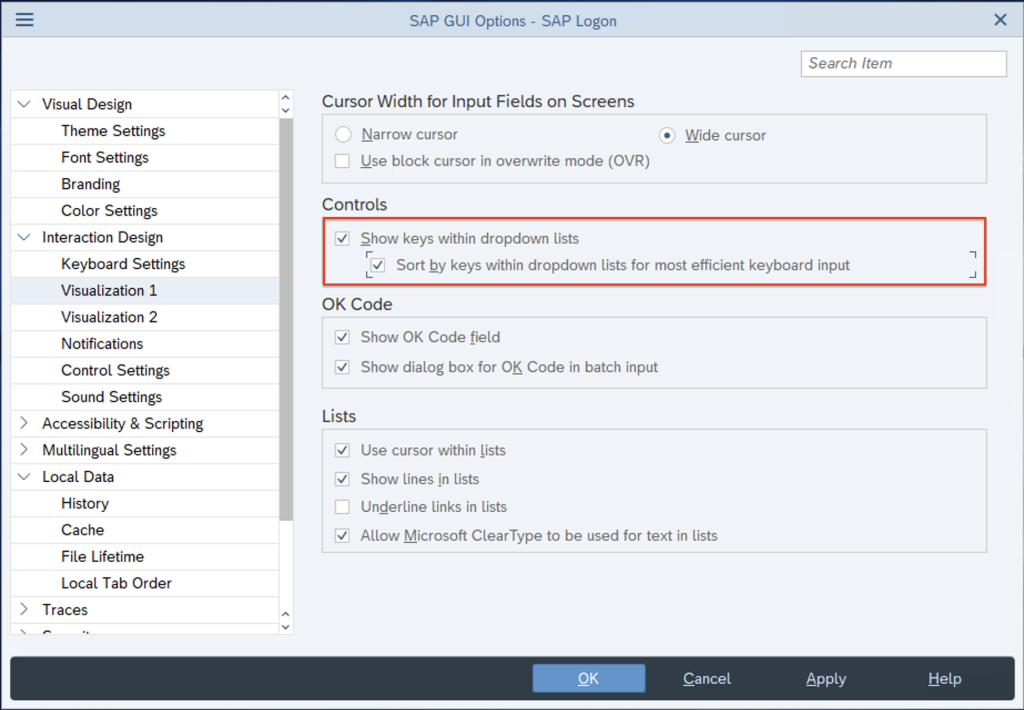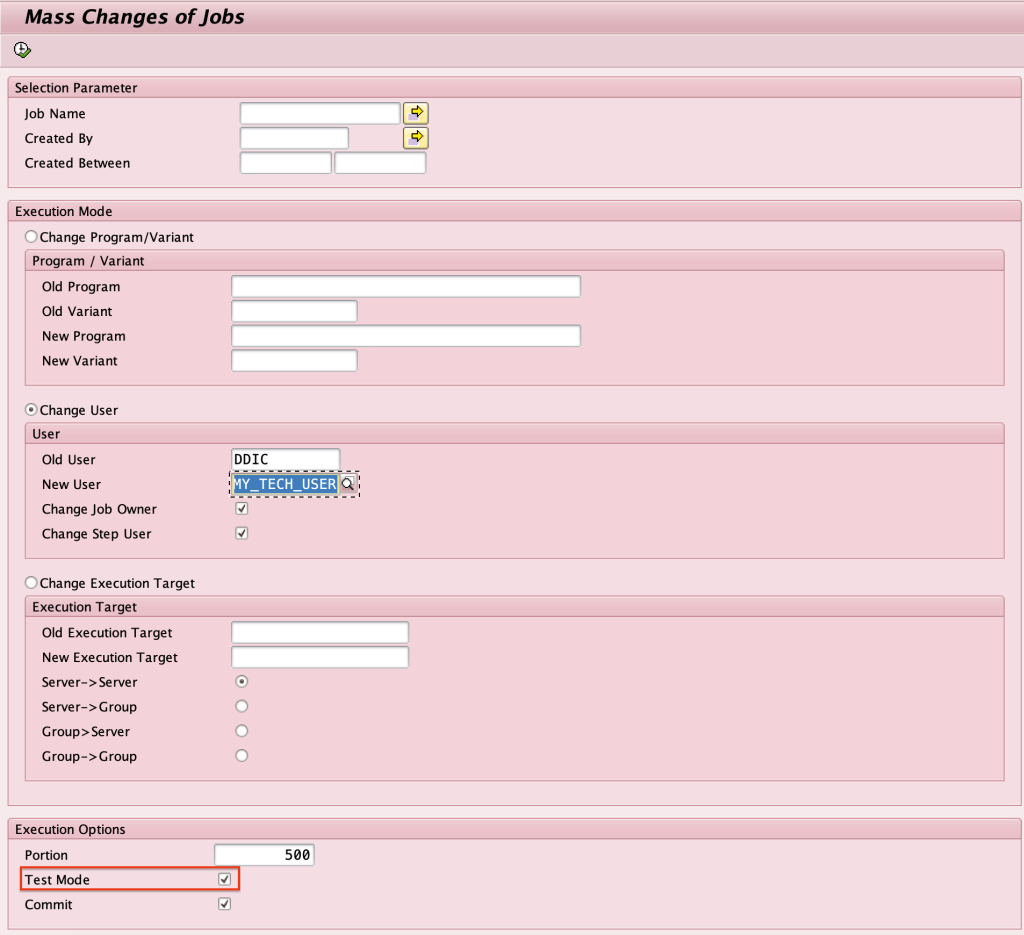You have to correct the parameter(transaction RZ10) rdisp/max_alt_modes. No reboot is required if you have a pretty fresh SAP Netweaver. The possible range value is 2..16.
Who did the changes in RFC destination?
Transaction SCU3 > analysis of changes for the tables mentioned below:
RFCATTRIB
RFCDES
RFCDOC
RFCDESSECU
For SCU3 to work, the rec_client parameter must be activated. In addition, you can also look at the DBTABLOG table.
How to make numbered lists in SAP Logon
Go to Options:

Tick this checkboxes:

Prohibition of request transfers through the transport system
If you need in SAP to prohibit the transfer of requests from the DEV system further along the transport landscape, you can create a file for this:
- /usr/sap/trans/bin/T_OFF.ALL to block all systems or
- /usr/sap/trans/bin/T_OFF.ER2 to block to a specific system.
The contents of the file will be displayed during the attempt (unsuccessful) to release the request in the development system.
Bulk change of owner of background jobs
Transaction SE38 > report BTC_MASS_JOB_CHANGE. Firstly, check with Test Mode.

In addition, you can change variant and traget application server for the jobs.
SAP for Java (MacOS). Login without password.
I would like to use, of course, SSO 3 for MacOS, but..
In SAP GUI for JAVA (MacOS), you can create a shortcut and save your login and password.
It’s convenient to drag it into the dock for a quick start:
- Right-click in the SAP GUI on the desired system > Save Connection Data as Document, save it somewhere
- Find this file and open it with a text editor
- Add data to the connection string (enter your user= and pass=):
conn=/H/hostname.domain.com/S/3200&expert=true&user=ikostylev&pass=MYPASS&clnt=100 - Save, drag the file to the dock on the right side
It is not safe to store passwords in clear text, but if you really need to, you can.
For security, encrypt the disk by enabling FileVault.
Hana memory leak when switching to SP05
A story that happened with me once…
After switching from release 46 to release 50, an unpleasant thing was discovered – a strange memory leak, and it happened exclusively on Mondays. The switching would be due to the fact that SP05 uses memory much more economically compared to SP04 (Note 2808956 about the Pool/L/llang/Debuggee problem). The problem occurred on Mondays immediately after running the background job /BDL/TASK_PROCESSOR. This background job is responsible for EWA purposes.

After this background job, the memory of dpserver, xsengine and docstore starts to expand:

The solution was found in note 2955475, it says that you need to update ST-PI, but in fact it was necessary to update both ST-PI and ST-A/PI to the latest version. Which is logical, because these components participate in EWA and work in pairs.
SE16n does not display table column headers
Have you set the table data elements to be output to ALV, but for some reason the old or empty column headers are being output? Database utility didn’t help?
Use one of the following programs to clear the ALV buffer:
- BALVBUFDEL
- BCALV_BUFFER_DELETE
- BCALV_BUFFER_DEL_SHARED